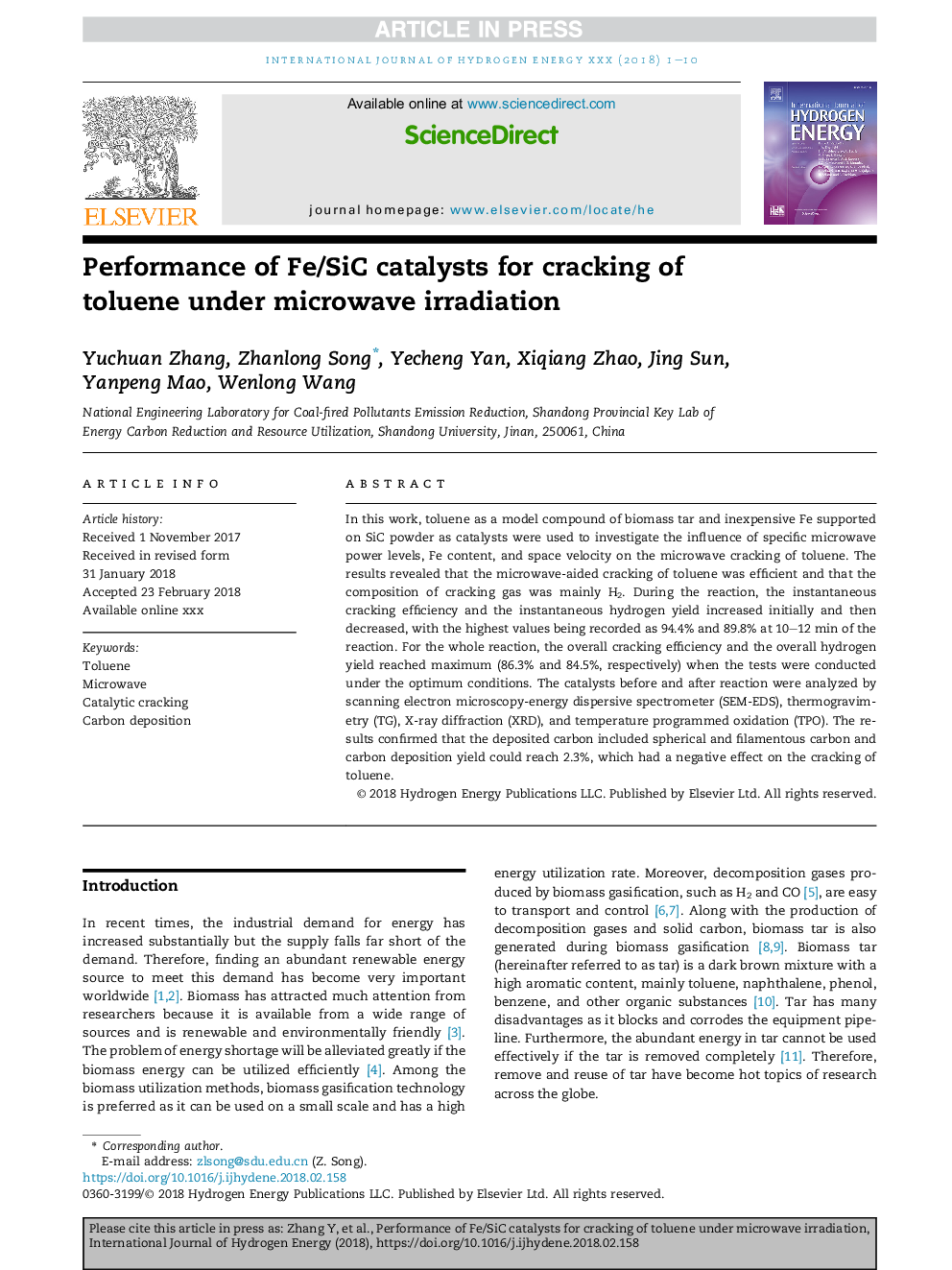| Article ID | Journal | Published Year | Pages | File Type |
|---|---|---|---|---|
| 7706510 | International Journal of Hydrogen Energy | 2018 | 10 Pages |
Abstract
In this work, toluene as a model compound of biomass tar and inexpensive Fe supported on SiC powder as catalysts were used to investigate the influence of specific microwave power levels, Fe content, and space velocity on the microwave cracking of toluene. The results revealed that the microwave-aided cracking of toluene was efficient and that the composition of cracking gas was mainly H2. During the reaction, the instantaneous cracking efficiency and the instantaneous hydrogen yield increased initially and then decreased, with the highest values being recorded as 94.4% and 89.8% at 10-12Â min of the reaction. For the whole reaction, the overall cracking efficiency and the overall hydrogen yield reached maximum (86.3% and 84.5%, respectively) when the tests were conducted under the optimum conditions. The catalysts before and after reaction were analyzed by scanning electron microscopy-energy dispersive spectrometer (SEM-EDS), thermogravimetry (TG), X-ray diffraction (XRD), and temperature programmed oxidation (TPO). The results confirmed that the deposited carbon included spherical and filamentous carbon and carbon deposition yield could reach 2.3%, which had a negative effect on the cracking of toluene.
Related Topics
Physical Sciences and Engineering
Chemistry
Electrochemistry
Authors
Yuchuan Zhang, Zhanlong Song, Yecheng Yan, Xiqiang Zhao, Jing Sun, Yanpeng Mao, Wenlong Wang,
